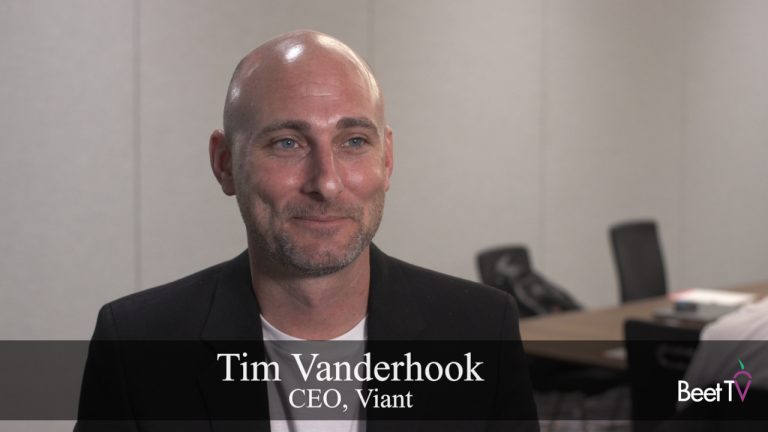
As much as connected TV (CTV) gives advertisers new opportunities to reach viewers, lack of control in some platforms also risks exposing viewers to too many duplicate ads.
It is a problem many companies are trying to tackle.
In this video interview with Beet.TV, Tim Vanderhook, CEO, Viant, puts forward his understanding of the problem and his vision for a solution.
Broken experience
“There are many times where I see the same ad over and over and over again,” Vanderhook complains.
“That’s because the lack of an ID in the bid stream and cookie-based DSPs just have an inability to recognise that.
“So the consumer experience is still broken due to over frequency. Marketers are wasting a lot of money on over frequency.”
Solving duplication
Viant offers a DSP, household ID, identity resolution and other services.
Vanderhook was recently named joint Entrepreneur Of The Year for the Pacific Southwest region by EY.
In May, Viant announced its own take on solving the over-frequency problem – a partnership with video platform IRIS.TV to better describe video ad creative.
Context to the rescue?
“When it comes to connected television, it’s a unique space,” Vanderhook adds. “There’s no cookie, there’s no website. You have to take a completely different approach in connected TV.”
IRIS.TV data, which describes the context and content of videos, can now enrich Viant’s Household ID. The theory goes – if Viant can better describe ads to systems, it will reduce the chance of repeat play-outs.
“(It) passes a category and a subcategory on what that content is about,” Vanderhook says.
“Advertisers are going to be able to use these as bridging the gap. You don’t need to know the exact video, but you do need to know genre and sub genre to be able to target and find audiences that are similar and then measure against that genre.”
Tim Vanderhook spoke at the Advanced Advertising Summit in New York. He was interviewed by Jon Watts, Editorial Director, Beet.TV Events.